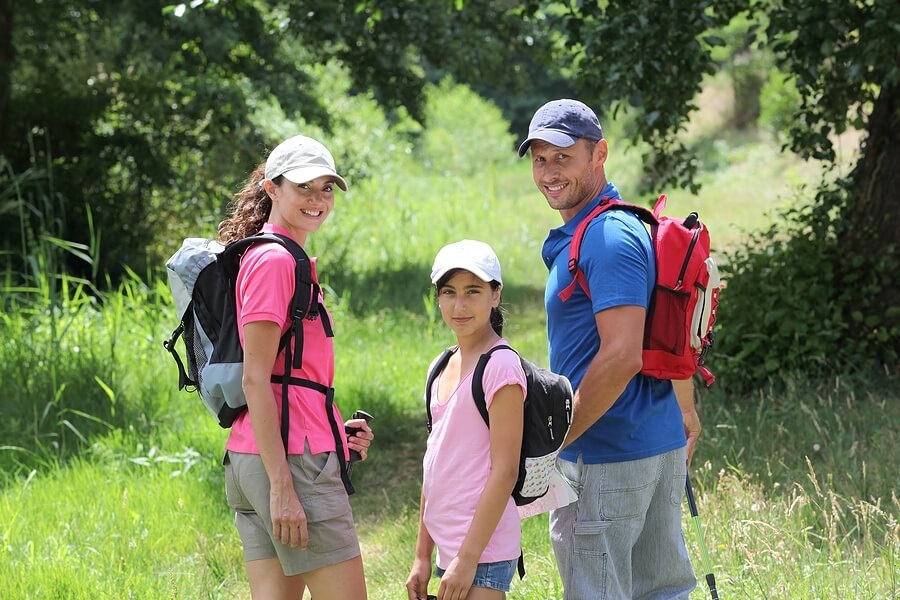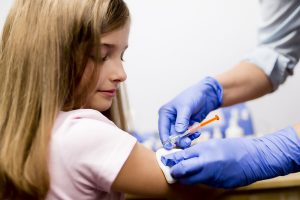


The American Academy of Pediatrics (AAP) does not recommend using products containing DEET on children less than two months old. They also recommend choosing a product with the lowest concentration effective for the amount of time spent outdoors, and only applying DEET once per day. In addition, do not use a product that combines DEET with sunscreen.
Remember to always follow the application instructions. Parents should apply bug repellents on children, making sure to avoid any contact with the eyes, mouth, or hands, and should only use products containing DEET when necessary.

Clothing that has already been pre-treated is also available in many sporting goods stores, and can stay protected for up to 70 washings.
Wear long pants and socks with either sneakers or hiking boots, with your pants tucked into your socks, and a long-sleeved shirt tucked into your pants.
Wearing light-colored clothing also makes it easier to spot a tick crawling on you.


When examining your child, check under the arms, in and around the ears, in the belly button, behind the knees, between the legs, around the waist, and especially in his hair.


- Using a pair of fine-tipped tweezers, grasp the tick as close to the surface of the skin as possible.
- Pull upward with steady, even pressure. Do not twist or jerk the tick— this can cause the mouth parts to break off and remain embedded.
- If the mouth parts do break off, remove them with tweezers. If you are unable to remove them easily with clean tweezers, leave them alone and let the skin heal.
- After you have removed the tick, thoroughly clean the bite area and your hands with rubbing alcohol, an iodine scrub, or soap and water.
- Avoid folklore remedies such as “painting” the tick with nail polish or petroleum jelly, or using heat to make the tick detach.
- The tick might have been on the skin for more than 24 hours.
- Part of the tick remains in the skin after you have attempted to remove it.
- A rash of any kind develops, especially a red-ringed bulls eye rash, or red spots on the wrists or ankles, as this is a symptom of Lyme disease.
Seek medical attention if:





